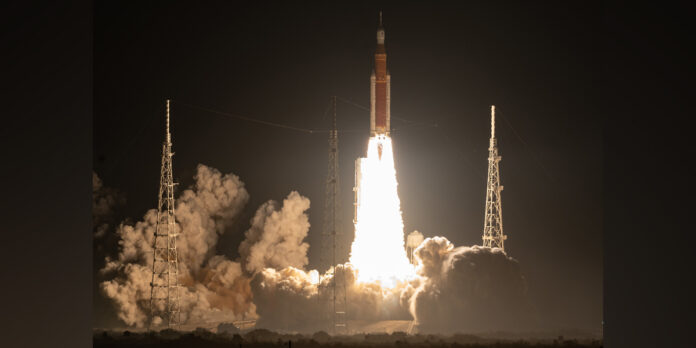Aerospace Industries Association President and CEO Eric Fanning applauded the Senate Committee on Commerce, Science, and Transportation for their inclusion of critical additional funding for NASA in the Senate version of the reconciliation package.
“AIA applauds the Senate Committee on Commerce, Science, and Transportation for including supplemental funding for NASA into legislation for the reconciliation process, providing continuity for several critical NASA projects, including our mission to get back to the moon and for the International Space Station,” he said in a news release. “As industry continues to push into new frontiers and outpace our competitors in space, this effort shows Congress is dedicated to moving forward with mission-critical programs and maintaining our space leadership.
“We thank the ommittee for their continued support of the American space industry.”
Project appropriations under the proposal:
- Mars Telecommunications Orbiter – $700 million for the commercial procurement of a Mars Telecommunications Orbiter.
This orbiter is dual-use for a Mars Sample Return mission, to return core samples of Mars to Earth, and future manned Mars missions. - Gateway – $2.6 billion to fully fund the lunar space station known as Gateway, which is critical for establishing a sustained human presence at the moon, as required by statute. Trump’s 2026 budget proposal cancels Gateway.
- Space Launch System – $4.1 billion to fund two Space Launch System (SLS) rockets for the Artemis IV and V missions.
The SLS is the only human-rated rocket available that can get humans to the moon. Importantly, this funding would not preclude integrating new, commercial options if and when they become available. Trump’s proposed 2026 budget cancels the SLS after the Artemis 3 moon-landing mission, which is slated to launch in 2027. - Orion Crew Vehicle – $20 million to fund the continued procurement of the fourth Orion multi-purpose crew vehicle for use with SLS for Artemis IV and reuse with subsequent Artemis Missions.
Orion is the vehicle which will take astronauts to Gateway and return them safely to Earth. Trump’s proposed 2026 budget cancels the Orion after the Artemis 3 mission. - International Space Station – $1.25 billion for the space station operations over five years.
This would provide necessary funding for space operations to, from, and on the ISS to ensure an orderly transition from ISS to commercial platforms after 2030 and ensure there is no gap in American leadership in low-Earth orbit. - NASA Center Improvements – $1 billion for infrastructure improvements at manned space flight centers. Between deferred maintenance and delayed construction of new facilities, NASA’s infrastructure backlog across all centers is above $5 billion. The funds would focus only on the manned space flight centers and on the infrastructure needed to beat China to Mars and the moon.
Specifically:
Marshall Space Flight Center – $100 million for infrastructure repairs and upgrades. Marshall is NASA’s home for propulsion.
Stennis Space Center – $120 million for infrastructure repairs and upgrades. Stennis is the home of NASA’s rocket engine testing for the heavy-lift rocket engines necessary to get to deep space.
Kennedy Space Center – $250 million for infrastructure repairs. The Kennedy Space Center is NASA’s premier launch complex and from which every American astronaut has been sent to space.
Johnson Space Center – $300 million for infrastructure repairs and upgrades. JSC is home to mission control, the astronaut corps, and overall space operations.
Michoud Assembly Facility – $30 million for infrastructure repairs and upgrades.
U.S. Deorbit Vehicle – $325 million to fund the U.S. Deorbit Vehicle to safely deorbit the ISS. This vehicle is necessary to safely deorbit the ISS once it has reached the end of its useful life, and without which the odds of re-entry over a population center are roughly 1 in 10.
Don’t miss out! Subscribe to our email newsletter to have all our smart stories delivered to your inbox.



